Find the best Sesame Oil Substitutes for your health, calorie, and cooking needs.
We’ve found the 10 best sesame seed oil substitutes, and researched each so you don’t have to!


Below we have compiled all the information you’ll need to find the right sesame seed oil alternatives for your cooking and dietary needs.
Question: What Does Sesame Oil Taste Like?
Answer: Sesame oil and toasted sesame oil have a nutty flavor, similar to tahini. It’s great in salad dressings, stir fry recipes, and anything you might want to add an asian oil flavor.
SPECIAL TIP: Be sure to look out for “Special Tips” that will help you enhance the flavor of the sesame oil substitutes below. These tips will help better match the flavor of toasted sesame oil.
The 10 Best Sesame Oil Substitutes
Below you will find the 10 best sesame oil substitutes.
- Olive Oil
- Grapeseed Oil
- Avocado Oil
- Peanut Oil
- Perella Oil
- Walnut Oil
- Pumpkin Seed Oil
- Almond Oil
- Sunflower Oil
- Extra Virgin Olive Oil
Along with each sesame oil substitute, you’ll find the measurement, flavor, calorie, and health benefit differences and similarities.
1. Olive Oil
Olive oil is our favorite substitute for sesame oil. Now we’re not talking about Extra Virgin olive oil (we will cover that below) but olive oil.
This oil is more refined, and therefore it has a milder flavor from Extra Virgin olive oil. This is why olive oil a great substitute for sesame see oil.


Olive Oil vs Sesame Oil:
- 1:1 Ratio – When substituting olive oil for sesame oil, you’ll use the “one to one” ratio. Equal measurements!
- Flavor – Olive oil (not Extra Virgin) has a lighter flavor, so you will loose the nuttiness from the sesame oil. Try adding some sesame seeds or peanuts in with the oil to boost the flavor.
- Calories – Olive oil and sesame seed oil have equal calories. Both olive oil and sesame seed oil have 120 calories per tablespoon.
- Health Benefits – Both sesame oil and olive oil are great for your heart. The also both have anti-inflammatory properties. (1)(2)(3)(4)
Special Tip: Add some sesame seeds, peanuts, or pine nuts to the oil. This will boost the nutty flavor, and make olive oil taste more like toasted sesame oil.
2. Grapeseed Oil
Another mild oil is grapeseed oil, this makes it a great sesame oil replacement.
Grapeseed oil has lots of similar health benefits (see below) and the same amount of calories. Making it a great sesame oil alternative for any recipe.
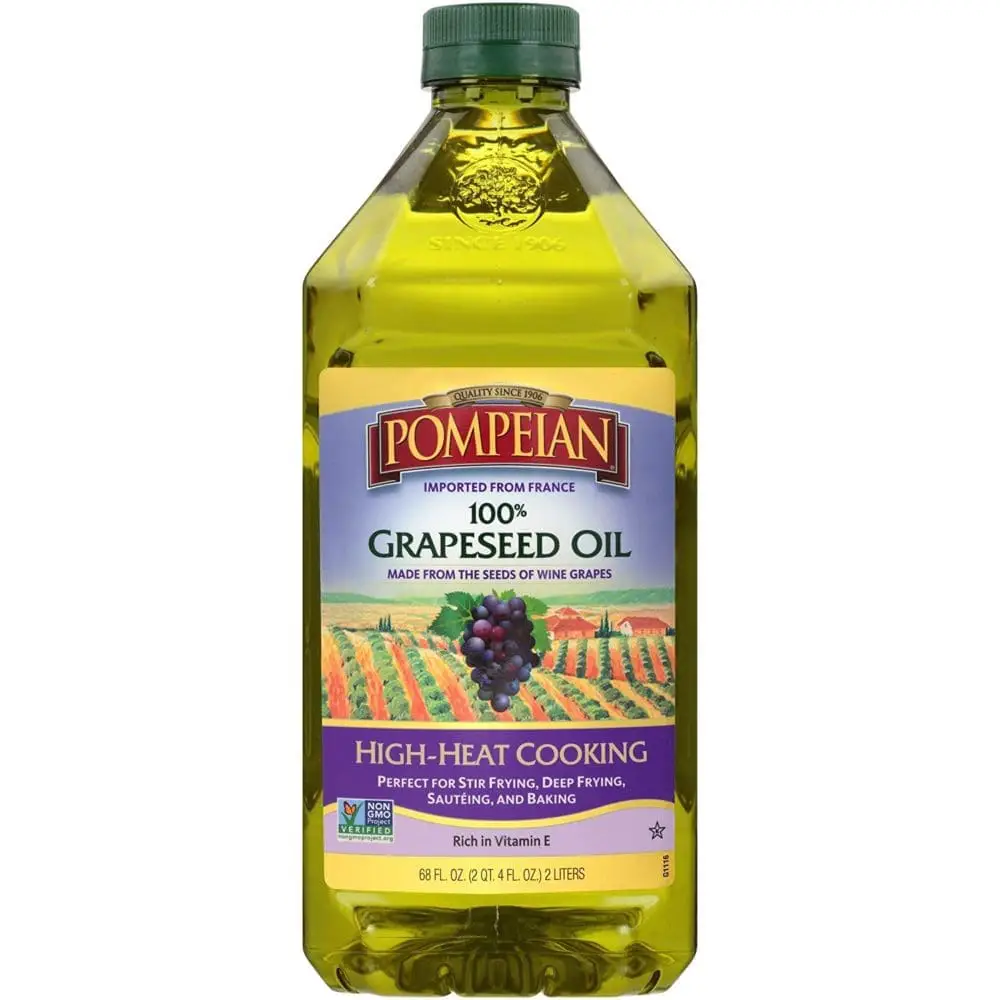

Sesame Oil vs Grapeseed Oil:
- 1:1 Ratio – When substituting grapeseed oil for sesame oil, you’ll use the “one to one” ratio. Equal measurements!
- Flavor – Grapeseed oil has a lighter flavor, so you will loose the nuttiness from the sesame oil. Try adding some sesame seeds, pine nuts, or peanuts in with the oil to boost the flavor.
- Calories – Grapeseed oil and sesame seed oil have equal calories. Both grapeseed oil and sesame seed oil have 120 calories per tablespoon.
- Health Benefits – Both sesame seed oil and grapeseed oil are great for hair and skin health. Both oils are also very high in omega-6 fatty acids. (5)(6)(7)(8)(9)
Special Tip: Just like olive oil, grapeseed will lack the nutty flavor of sesame oil. Add some nuts (peanuts, pine nuts, walnuts) or 1/4 teaspoon of tahini to make grapeseed oil taste more like sesame oil.
3. Avocado Oil
This high smoke point oil is a great toasted sesame oil substitute. It has a very light flavor and can easily be modified with a teaspoon of sesame seeds, or chopped nuts.
This sesame seed oil substitute is also great for you. Avocado oil enhances the absorption of nutrients, so you get more health benefits from your food. It also aids in heart health and easing pain (more below).
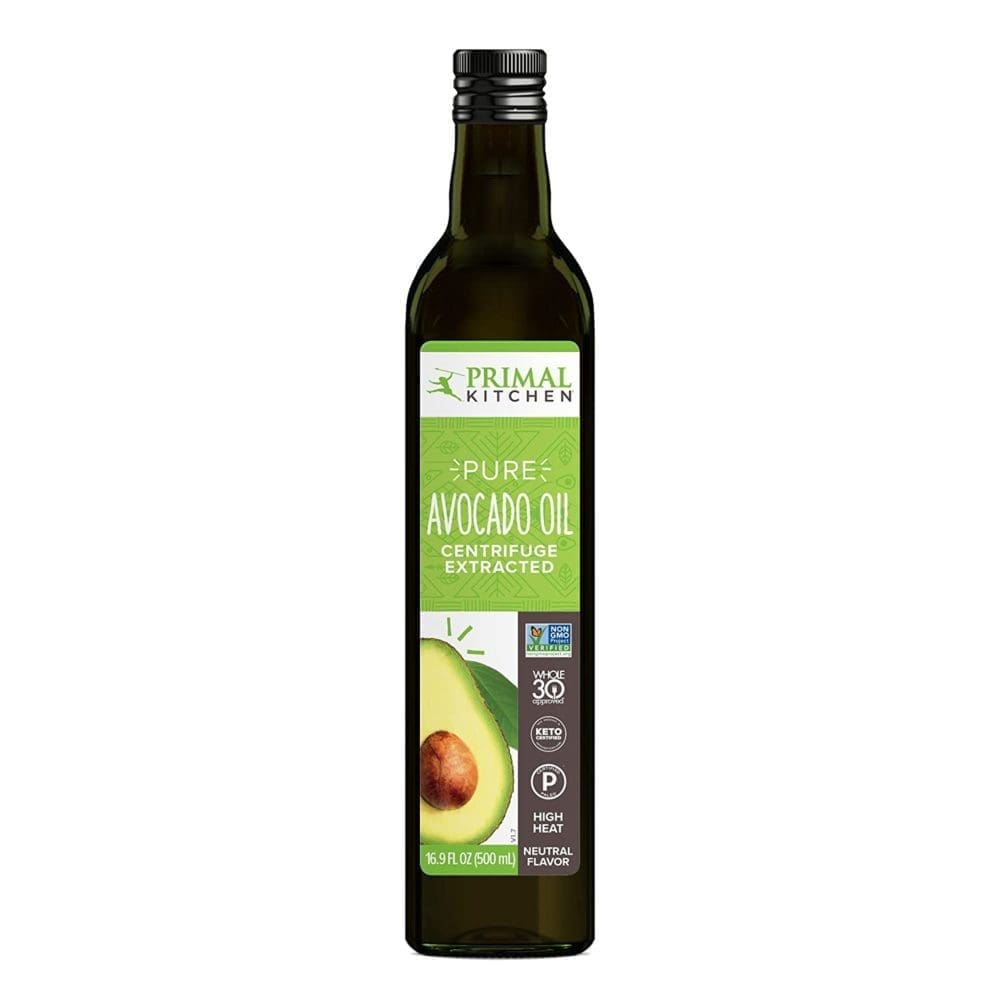

Sesame Oil vs Avocado Oil:
- 1:1 Ratio – When substituting avocado oil for sesame oil, you’ll use the “one to one” ratio. Equal measurements!
- Flavor – Avocado oil has a lighter flavor, so you will loose the nuttiness from the sesame oil. Try adding some sesame seeds in with the oil to boost the flavor.
- Calories – Avocado oil and sesame seed oil have equal calories. Both avocado oil and sesame seed oil have 120 calories per tablespoon.
- Health Benefits – Both avocado oil and sesame seed oil are great for heart health, and avocado oil can help lower blood pressure. Avocado oil and sesame oil are both great for arthritis pain as well. (10)(11)(12)(13)(14)
Special Tip: Want to boost the flavor of avocado oil? When making salad dressings, stir fry recipes, and sauces, add in 1/2 tablespoon of tahini paste to each 1/8 cup avocado oil.
4. Peanut Oil
This nutty oil is a great substitute for sesame oil in stir fry and other high heat recipes.
Peanut oil has a a high smoke point and can even be used to fry foods. This nutty sesame seed substitute has the same calories as the real thing.


Sesame Oil vs Peanut Oil:
- 1:1 Ratio – When substituting peanut oil for sesame oil, you’ll use the “one to one” ratio. Equal measurements!
- Flavor – Just like toasted sesame oil, peanut oil has a nutty flavor. This oil makes a wonderful alternative for sesame oil!
- Calories – Peanut oil and sesame seed oil have equal calories. Both peanut oil and sesame seed oil have 120 calories per tablespoon.
- Health Benefits – Both peanut oil and sesame oil help control blood sugar, and aid in heart health. (15)(16)(17)(18)
If you’re allergic to sesame oil and sesames, peanut oil is a good option.
5. Perilla Oil
This low calorie substitute for sesame oil is also made from pressing oil from seeds.
The perilla seed is commonly found in Southeast Asia and Indian highlands. The perilla plant is traditionally grown in the Korean peninsula, southern China, Japan and India.


Sesame Oil vs Perilla Oil:
- 1:1 Ratio – When substituting perilla oil for sesame oil, you’ll use the “one to one” ratio. Equal measurements!
- Flavor – Just like toasted sesame oil, perilla oil has a nutty flavor. This oil makes a wonderful alternative for sesame oil!
- Calories – Perilla oil has juts 20 calories per tablespoon… a far cry from the 120 calories toasted sesame oil has!
- Health Benefits – Perilla oil and toasted sesame oil both help lower cholesterol, and Perilla oil can help manage asthma. (19)(20)(21)
If nuts are a problem, but seeds aren’t… Perilla Oil is a great sesame oil substitute.
6. Walnut Oil
If you’re looking for a sesame oil substitute for salad dressings and uncooked sauces, walnut oil is a great option.
But we don’t recommend cooking with walnut oil. It turns bitter and could ruin the taste of your meal.
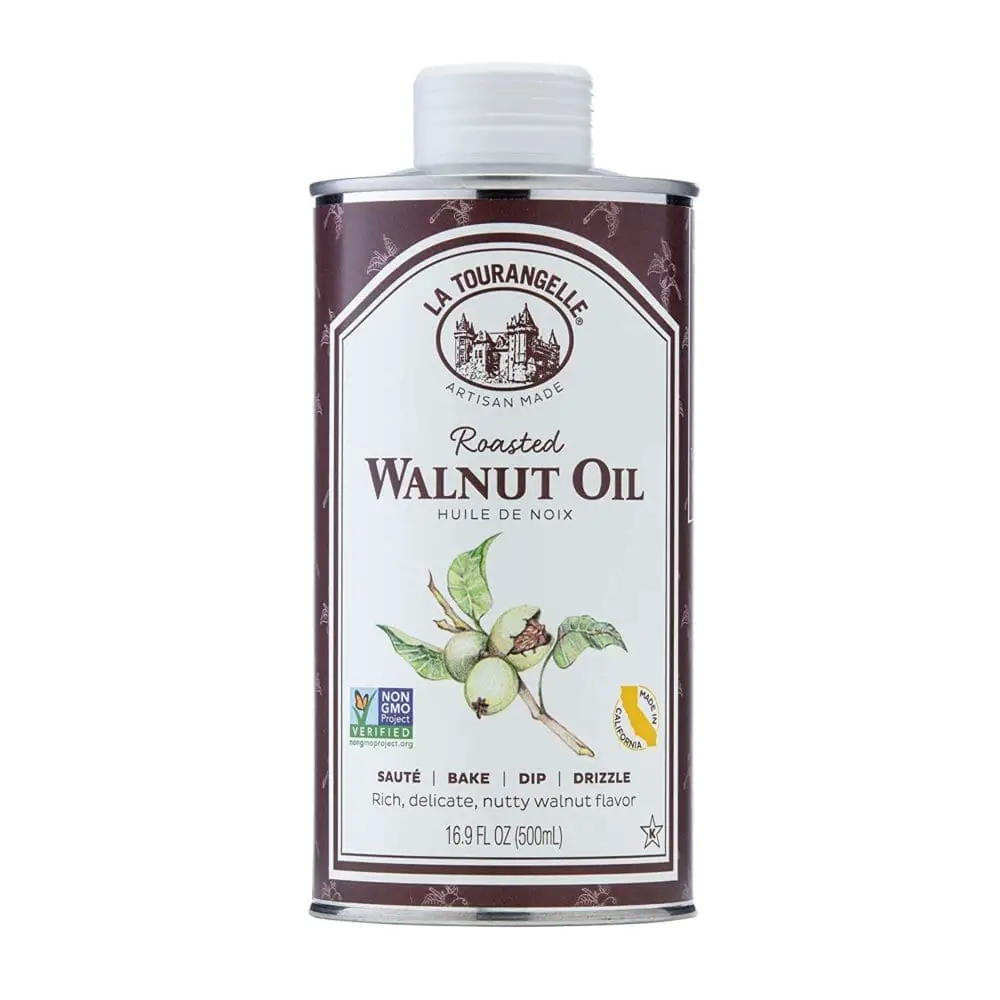

Sesame Oil vs Walnut Oil:
- 1:1 Ratio – When substituting walnut oil for sesame oil, you’ll use the “one to one” ratio. Equal measurements!
- Flavor – Walnut oil is not ideal for cooking, it becomes bitter when cooking and therefore is best for salad dressings and sauces. With that said, walnut oil has a similar nutty flavor and is a great substitute for sesame oil.
- Calories – Walnut oil and sesame seed oil have equal calories. Both walnut oil and sesame seed oil have 120 calories per tablespoon.
- Health Benefits – Both walnut oil and sesame seed oil help control blood sugar, decrease inflammation. And walnut oil is great for skin health. (22)(23)(24)(25)(26)
Special Tip: Don’t cook with walnut oil, this sesame oil replacement is best in “uncooked” recipes like salad dressings.
7. Pumpkin Seed Oil
This substitute for toasted sesame oil is best in “uncooked” recipes like salad dressings.
It has a low point and will quickly burn, so save this replacement for Chinese sesame oil for dressings, dips, and drizzling.


Sesame Oil vs Pumpkin Oil:
- 1:1 Ratio – When substituting pumpkin seed oil for sesame oil, you’ll use the “one to one” ratio. Equal measurements!
- Flavor – Pumpkin seed oil has a nutty flavor that makes it a great sesame oil alternative. However it has a low smoke point, and best used in “uncooked” form such as salad dressings.
- Calories -Pumpkin seed oil has 130 calories per tablespoon, while sesame oil has 120 calories for the same amount.
- Health Benefits – Both pumpkin seed oil and sesame seed oil promote hair growth and healthy hair, and heart health. (27)(28)(29)
Special Tip: Pumpkin Seed oil has a low smoke point, so cooking with it is not ideal. Use it in salads dressings as a sesame oil or tahini replacement.
8. Almond Oil
This nut based oil has a high smoke point, so cooking with it works great. In fact you can even fry with almond oil!
But almond oil has a mild flavor, lacking in the nutty flavors you want in a sesame oil substitute. Add in some tahini (1/4 teaspoon tahini per 2 tablespoons of oil) or pine nuts to boost flavor and better mimic sesame seed oil flavors.
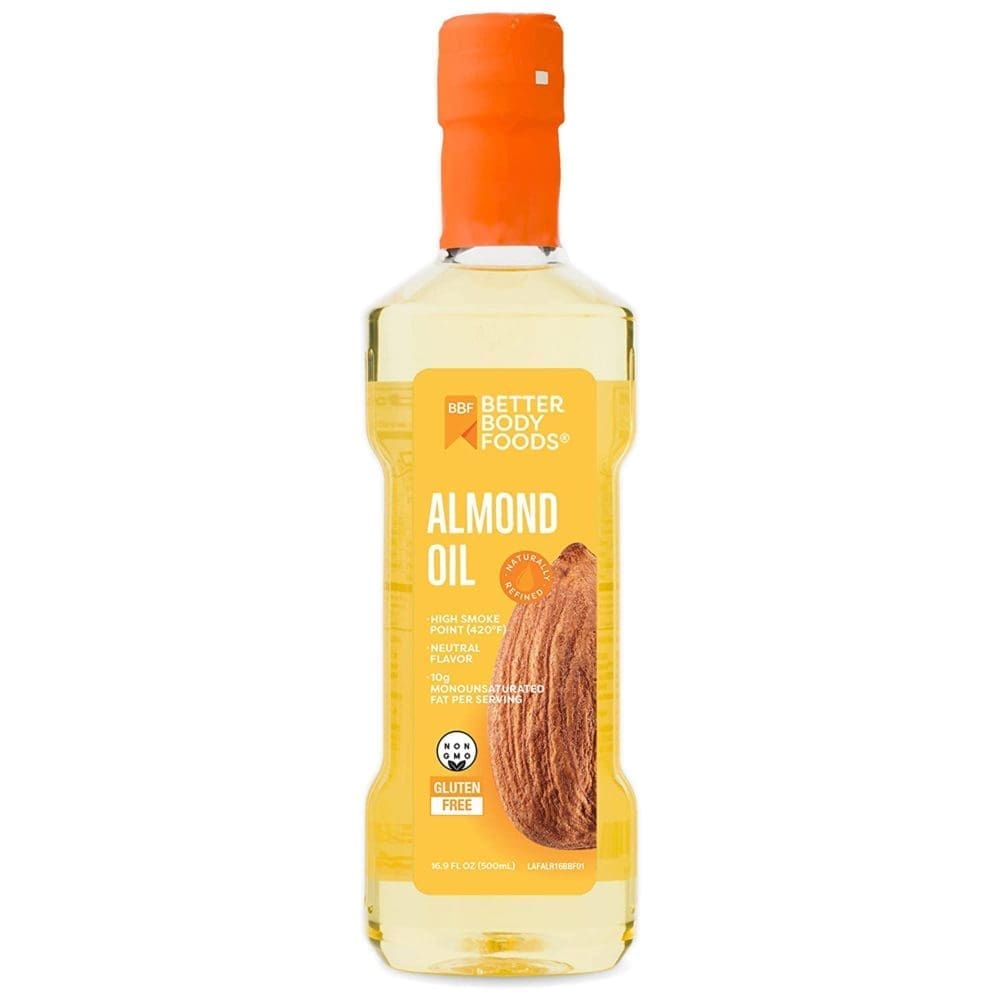

Sesame Oil vs Almond Oil:
- 1:1 Ratio – When substituting almond oil for sesame oil, you’ll use the “one to one” ratio. Equal measurements!
- Flavor – Almond oil has a lighter flavor, so you will loose the nuttiness from the sesame oil. Try adding some sesame seeds in with the oil to boost the flavor.
- Calories – Almond oil and sesame seed oil have equal calories. Both almond oil and sesame seed oil have 120 calories per tablespoon.
- Health Benefits – Both almond oil and sesame oil are high in antioxidants and help control blood sugar. (30)(31)(32)
Special Tip: Almond oil has a mild flavor. To better mimic the nuttiness of sesame oil add some sesame seeds, peanuts, walnuts, or tahini to the oil and cook together to release the flavors.
9. Sunflower Oil
Sunflower oil has a mild flavor and high smoke point. So you can cook with it without fear of burning.
Boost the flavor of sunflower oil with tahini, pine nuts, or sesame seeds.
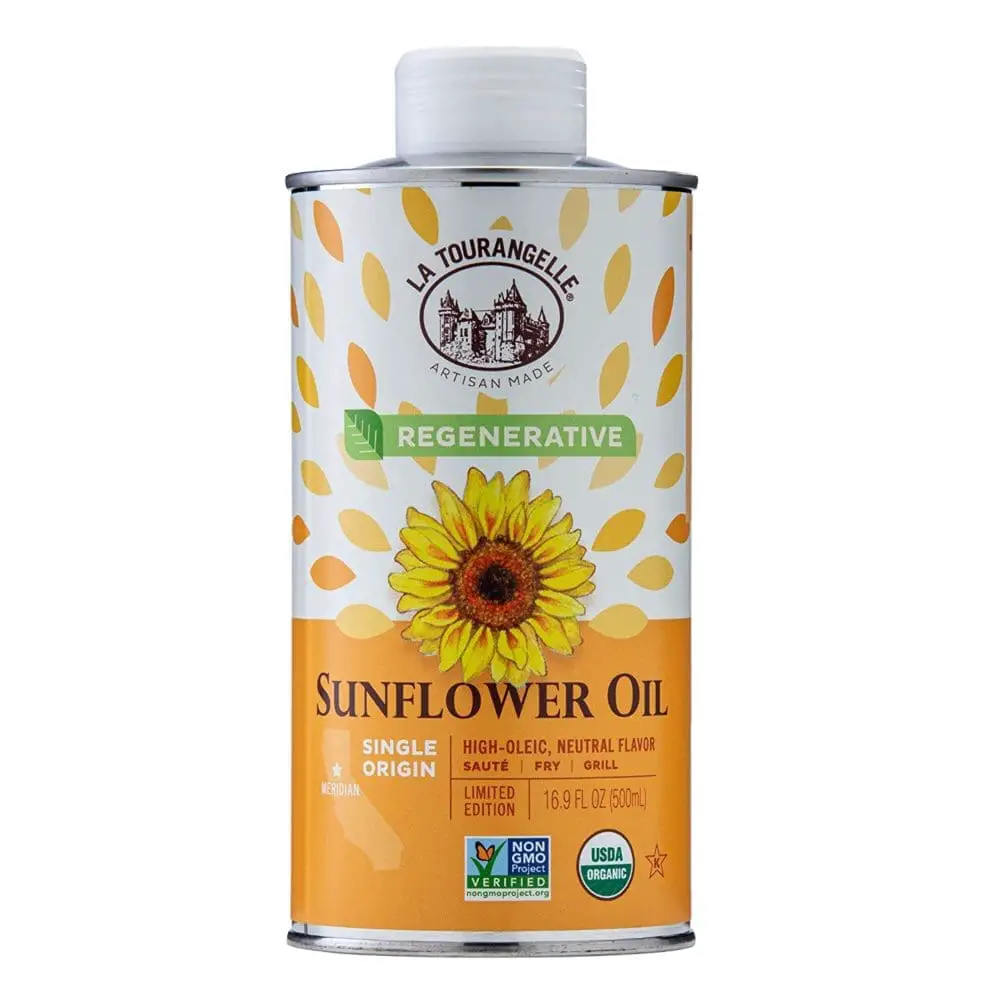

Sesame Oil vs Sunflower Oil:
- 1:1 Ratio – When substituting sunflower oil for sesame oil, you’ll use the “one to one” ratio. Equal measurements!
- Flavor – Sunflower oil has a neutral flavor, so you won’t have the nutty flavors of sesame oil. Try adding some sesame seeds, walnuts, or pine nuts in with the oil to boost the flavor.
- Calories – Sunflower oil has 130 calories per tablespoon, while sesame oil has 120 calories for the same amount.
- Health Benefits – Sunflower oil can help lower cholesterol. (33)
Special Tip: Sunflower oil has a mild flavor. Try adding some tahini, sesame seeds, pine nuts, or peanuts to the oil to boost the flavor and replicate the flavors of sesame oil.
10. Extra Virgin Olive Oil
Extra Virgin olive oil is not the most ideal of our substitutes for sesame oil. It has a strong peppery flavor, as apposed to a light nutty flavor.
If you still want to use EVOO as a toasted sesame oil substitute, pick a light version like the one below. Then maybe “doctor” it up with some tahini to boost the nuttiness you need in a good toasted sesame oil substitute.
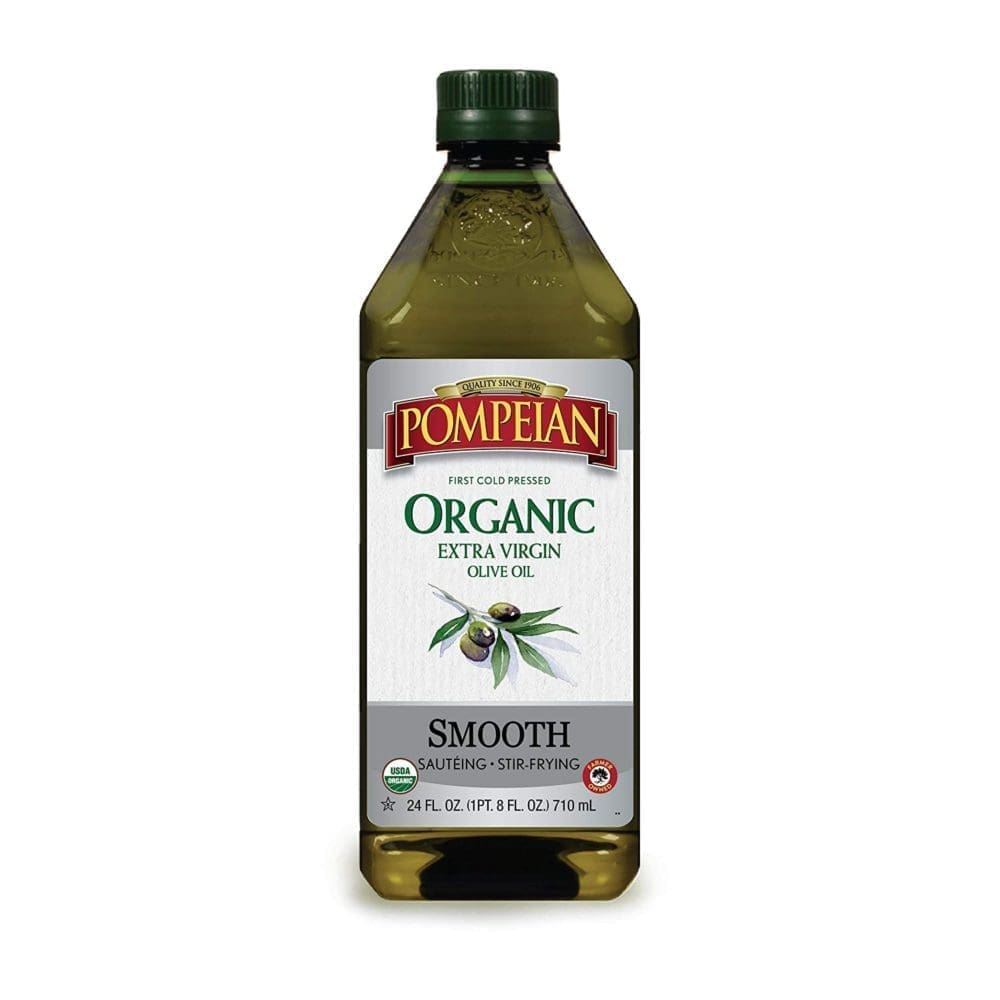

Sesame Oil vs Extra Virgin Olive Oil:
- 1:1 Ratio – When substituting extra virgin oil for sesame oil, you’ll use the “one to one” ratio. Equal measurements!
- Flavor – Extra Virgin olive oil has a strong peppery flavor, it’s not ideal for replacing sesame oil. But if you prefer to use it, get a mild version like the oven above. Then add in some tahini or pine nuts to boost the nutty flavor.
- Calories – Extra Virgin olive oil and sesame oil have equal calories. Both EVOO and sesame seed oil have 120 calories per tablespoon.
- Health Benefits – Extra Virgin olive oil can help reduce the risk of strokes. And both sesame oil and EVOO can help prevent heart disease, and the pain associated with arthritus. (34)(35)(36)
Special Tip: If you want to use Extra Virgin Olive oil to replace sesame oil, pick a mild EVOO. Most Extra Virgin olive oils have a strong peppery taste.
Printable Guide for Sesame Oil Substitutes:


10 Substitutes for Toasted Sesame Oil
Ingredients
- Olive Oil (light flavor) use to sauté and roast
- Grapeseed Oil (light flavor) use to fry, sauté, and roast
- Avocado Oil (light flavor) use to fry, sauté, and roast
- Peanut Oil (bold nutty flavor) use to fry, sauté, and roast
- Perella Oil (bold nutty flavor) use to sauté, roast, and in dressings
- Walnut Oil (bold nutty flavor) use in dressings and drizzling- not for cooking
- Pumpkin Seed Oil (bold nutty flavor) use in dressings and drizzling- not for cooking
- Almond Oil (light flavor) use to fry, sauté, and roast
- Sunflower Oil (light flavor) use to fry, sauté, and roast
- Extra Virgin Olive Oil (medium flavor) use to sauté and roast
Add-Ins to Boost Flavor:
- Tahini Paste (1/2 teaspoon per 1/4 cup oil)
- Sesame Seeds (1 teaspoon per 1/4 cup oil)
- Pine Nuts (2 teaspoons per 1/4 cup oil)
- Walnuts (1 tablespoon per 1/4 cup oil)
- Peanuts (1/2 tablespoon per 1/4 cup oil)
Instructions
For Light Flavor Oils:
- Add one of the add-ins to boost flavor.
- Tahini is best in salad dressing, and the nuts should be cooked in with the oil and other recipe ingredients.
For Medium Flavor Oils:
- Choose a light oil to balance the flavors.
- Use one of the flavors to add nuttiness to the recipe.
- Tahini is best in salad dressing, and the nuts should be cooked in with the oil and other recipe ingredients.
For Bold Nutty Flavor:
- Just use as is, but be sure to use cooking oils for cooking, and non cooking oils for dressing.
Nutrition
What to Read Next:






Lose Weight By Eating Cookbooks


Pin this Article to Pinterest:


